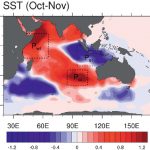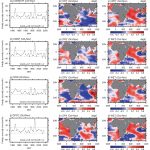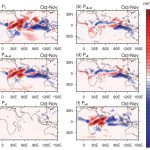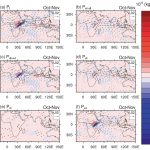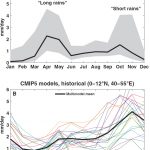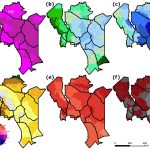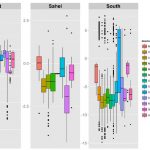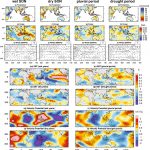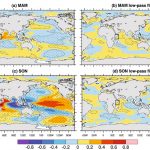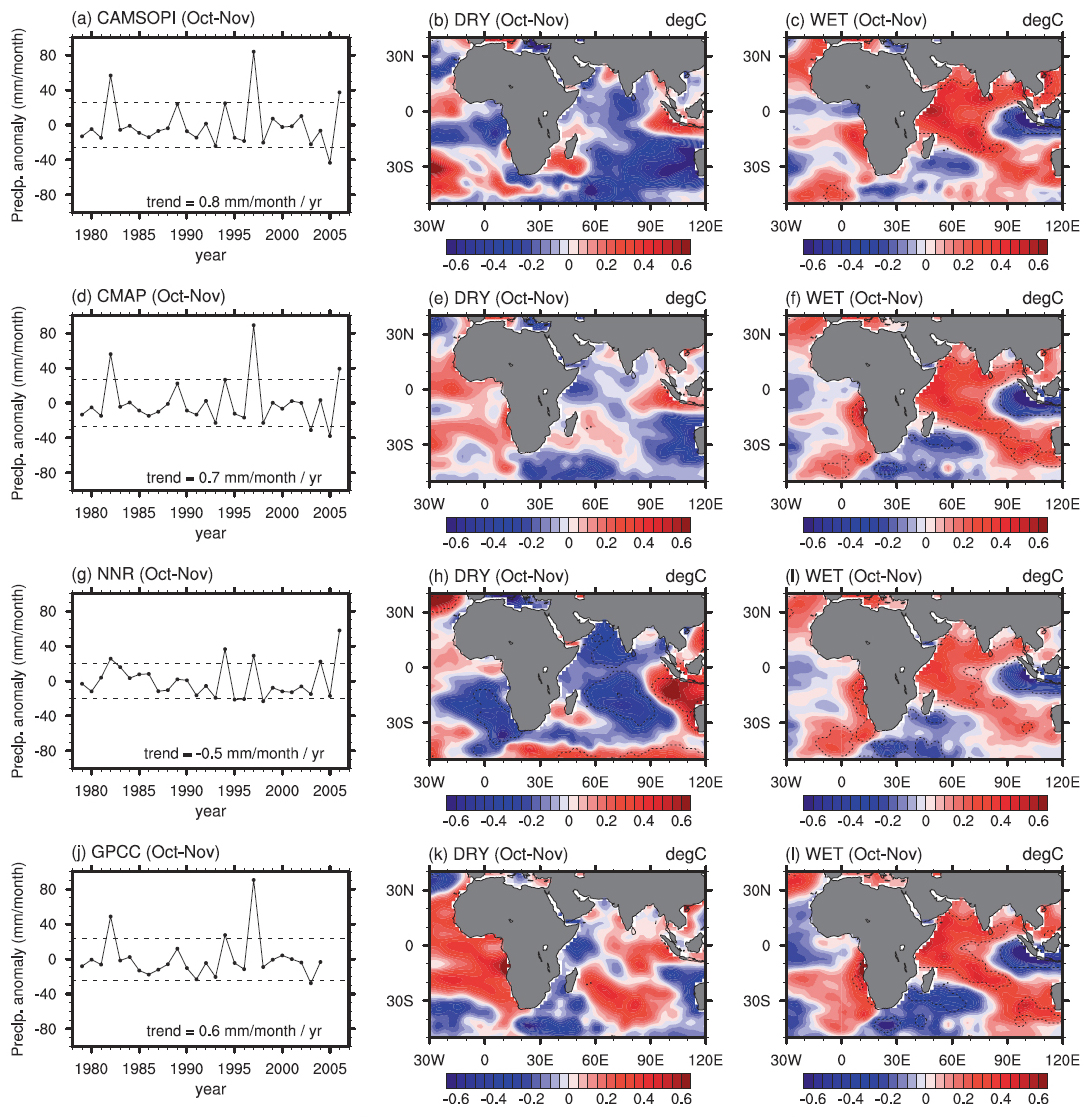East African Hydroclimate
Background
Much of the African continent faces frequent and devastating climate extremes with far-reaching economic and social consequences. These extremes are mainly related to a lack or an excess of rainfall over wide regions, often affecting the livelihood of millions, with a profound impact on rain-fed agriculture and pastoralism, water and food security, and public health.
Role of the Indian Ocean
Links between extreme wet conditions over East Africa and Indian Ocean sea surface temperatures (SST) are investigated during the core of the so-called short rain season in October–November. During periods of enhanced East African rainfall, Indian Ocean SST anomalies reminiscent of a tropical Indian Ocean Dipole (IOD) event are observed. In Ummenhofer et al. (2009), ensemble simulations with an atmospheric general circulation model are used to understand the relative effect of local and large-scale Indian Ocean SST anomalies on above-average East African precipitation. In the simulations, enhanced East African ‘‘short rains’’ are predominantly driven by the local warm SST anomalies in the western equatorial Indian Ocean, while the eastern cold pole of the tropical IOD is of lesser importance. The changed East African rainfall distribution can be explained by a reorganization of the atmospheric circulation induced by the SST anomalies. A reduction in sea level pressure over the western half of the Indian Ocean and converging wind anomalies over East Africa lead to moisture convergence and increased convective activity over the region. The pattern of large-scale circulation changes over the tropical Indian Ocean and adjacent landmasses is consistent with an anomalous strengthening of the Walker circulation. It is of interest to further explore the relative role of Indian and Pacific Ocean conditions for East African hydroclimate during the short and long rains across a range of timescales. In Ummenhofer et al. (2018), using a consistent framework with an unforced multi-century global coupled climate model simulation, the role of Indo-Pacific variability for East African rainfall is compared across timescales and related to observations. The dominant driver of East African rainfall anomalies critically depends on the timescale under consideration: Interannual variations in East African hydroclimate coincide with significant SST anomalies across the Indo-Pacific, including those associated with the IOD in the Indian Ocean and the El Niño-Southern Oscillation (ENSO) in the eastern Pacific, and are linked to changes in the Walker circulation, regional winds and vertical velocities over East Africa. Prolonged drought/pluvial periods in contrast exhibit anomalous SST predominantly in the Indian Ocean and Indo-Pacific warm pool region, while eastern Pacific anomalies are insignificant. We assessed dominant frequencies in Indo-Pacific SST and found the eastern equatorial Pacific dominated by higher frequency variability in the ENSO band, while the tropical Indian Ocean and Indo-Pacific warm pool exhibit lower-frequency variability beyond 10 years. This is consistent with the different contribution to regional precipitation anomalies for the eastern Pacific versus Indian Ocean and Indo-Pacific warm pool on interannual and decadal timescales, respectively.
Horn of Africa rainfall trends
During the last 30 years, the Horn of Africa has experienced a persistent decrease in rainfall during the March-May “long rains” season, the primary rainy season for the region. This has had major consequences for regional food security, where agriculture largely depends on rainfall and is thus highly vulnerable. Establishing whether this drying trend is unusual requires past climate information that extends beyond the instrumental record. In Tierney et al. (2015), we present a detailed record of changes in regional temperature and aridity in the eastern Horn of Africa region (Somalia, Djibouti, and eastern Ethiopia), which places the recent drying in a historical context.
We show that the rate of drying in the Horn of Africa during the 20th century is unusual in the context of the last 2000 years. It is synchronous with recent global and regional warming, and therefore may have an anthropogenic component. In contrast to 20th century drying, climate models predict that the Horn of Africa will become wetter as global temperatures rise. The projected increase in rainfall mainly occurs during the September–November “short rains” season, in response to large-scale weakening of the Walker circulation. Most of the models overestimate short rains precipitation while underestimating long rains precipitation, causing the Walker circulation response to unrealistically dominate the annual mean. Our results highlight the need for accurate simulation of the seasonal cycle and an improved understanding of the dynamics of the long rains season to predict future rainfall in the Horn of Africa.
Climate impacts
Pastoralist households across East Africa face major livestock losses during drought periods that can cause persistent poverty. For Kenya and southern Ethiopia, an existing index insurance scheme aims to reduce the adverse effects of such losses. The scheme insures individual households through a seasonal forage scarcity index derived from remotely-sensed vegetation time series. Until recently, insurance contracts covered animal losses and indemnity payouts were consequently made late in the season. Due to demand for asset protection insurance (pre-loss intervention), in Vrieling et al. (2016) our aim was to identify earlier payout options by shortening the temporal integration period of the index using remotely sensed data from the Moderate Resolution Imaging Spectroradiometer (MODIS). Our analysis shows that insurance payouts could be made 1-3 months earlier compared to the current index definition. This would allow pastoralists to use indemnity payments to protect their livestock through purchase of forage, water, or medicines.
Interannual climatic variability over a large portion of sub-Saharan Africa is under the influence of ENSO. Extreme variability in climate is a threat to rural livelihoods in sub-Saharan Africa, yet the role of ENSO in the balance between supply and demand of net primary productivity over this region is unclear. In Abdi et al. (2016), the impact of ENSO on this balance is analyzed in a spatially explicit framework using gridded population data from the WorldPop project, satellite-derived data on net primary productivity supply, and statistical data from the United Nations. Our findings highlight the importance of accounting for the role ENSO plays in modulating the balance between supply and demand of net primary productivity in sub-Saharan drylands. An important implication of these findings is that increase in net primary productivity demand for socio-economic metabolism must be taken into account within the context of climate-modulated supply.
Further information
Abdi A, Vrieling A, Yengoh GT, Anyamba A, Seaquist J, Ummenhofer CC, and Ardö J. (2016). The El Niño-La Niña cycle and recent trends in supply and demand of net primary productivity in African drylands. Climatic Change, 138, 111-125. Reprint
Tierney JE, Ummenhofer CC, and deMenocal PB. (2015). Past and future rainfall in the Horn of Africa. Science Advances, 1, doi:10.1126/sciadv.1500682. Reprint
Ummenhofer CC, Sen Gupta A, England MH and Reason CJC. (2009). Contributions of Indian Ocean sea surface temperatures to enhanced East African rainfall. Journal of Climate, 22, 993-1013. Reprint
Ummenhofer CC, Kulüke M, and Tierney JE. (2018). Extremes in East African hydroclimate and links to Indo-Pacific variability on interannual to decadal timescales. Climate Dynamics, 50, 2971-2991. Reprint
Vrieling A, Meroni M, Mude AG, Chantarat S, Ummenhofer CC, and de Bie CAJM. (2016). Early assessment of seasonal forage availability for mitigating the impact of drought on East African pastoralists. Remote Sensing of Environment, 174, 44-55. Reprint

